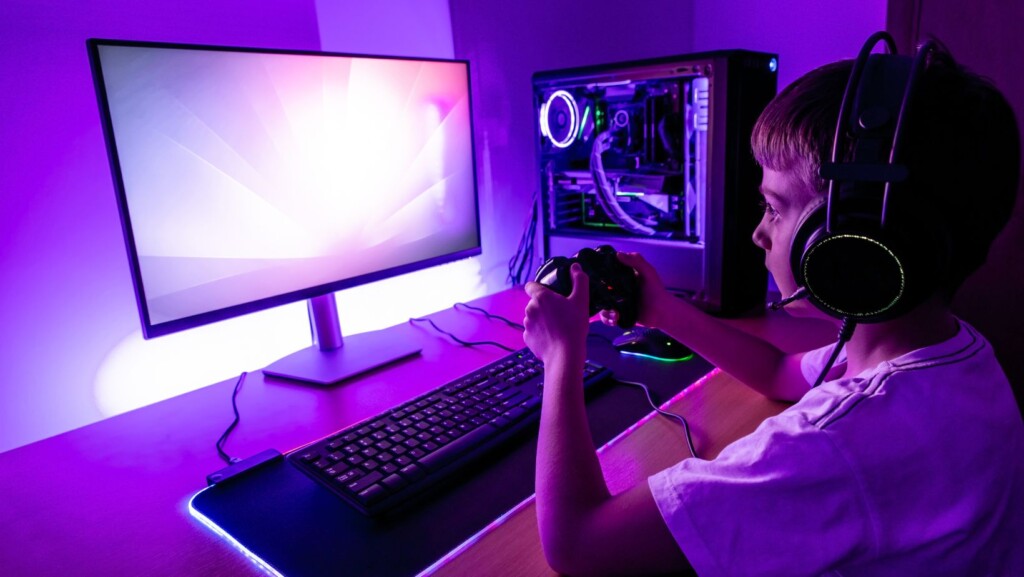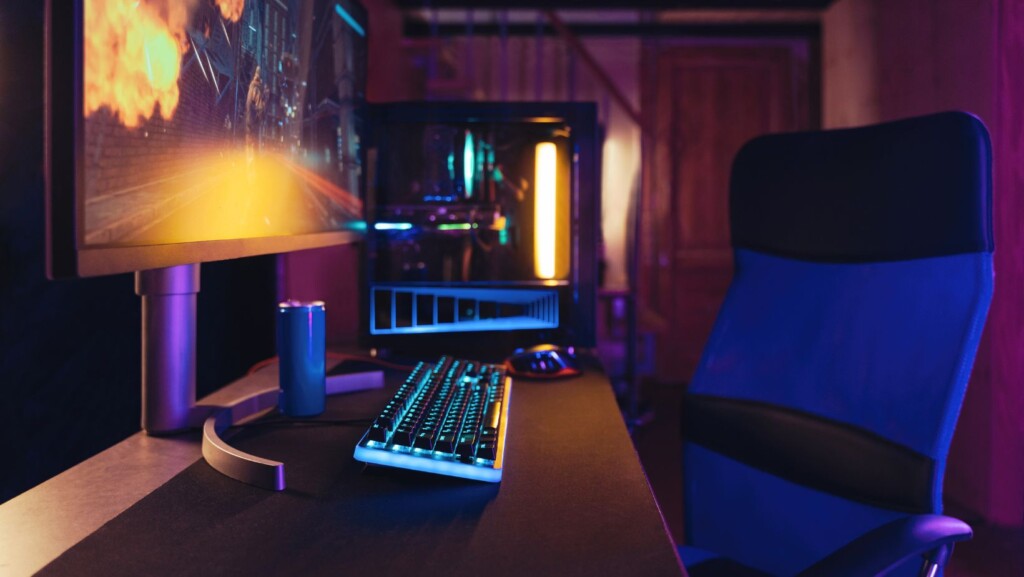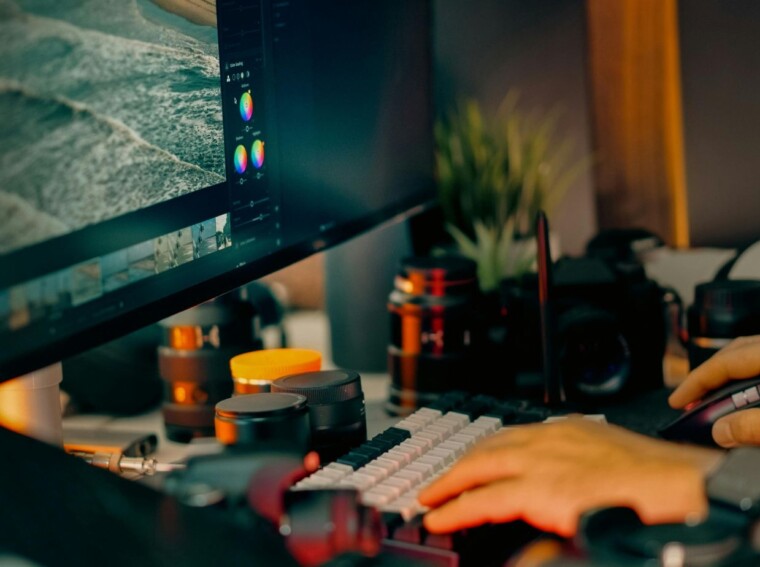A professional-grade gaming setup isn’t just about power; it’s about harmony. Power, precision, comfort, and care for the player all matter equally when hours of gameplay blur into one another. Modern gamers know that success depends on more than specs alone; it’s also about creating an environment that enhances performance and preserves focus over time.
Whether you’re building your first serious battle station or upgrading your current rig, a true pro setup should look incredible, perform flawlessly, and protect the one thing that can’t be replaced: your vision.
Here’s how to build a gaming station that feels as good as it looks, from high-end gear to essential visual protection.
1. Performance First: The Core of Every Setup
Any great gaming station starts with a solid performance base. The essentials are timeless:
- CPU & GPU synergy: A high-end processor paired with a balanced graphics card ensures smooth frame rates and multitasking for streaming, chat, and game capture.
- Fast storage: SSDs (preferably NVMe) drastically cut down loading times.
- Optimized cooling: Proper airflow or liquid cooling extends lifespan and keeps noise low.
- Reliable power supply: Go slightly above your system’s needs — stability matters more than raw wattage.
Pro tip: When in doubt, invest in scalability. E.g, a case with airflow room, a motherboard with extra PCIe slots, and a PSU that can handle future upgrades.
2. The Monitor: Where Performance Meets Perception
Your display defines how you feel your game. The wrong monitor can make a $3,000 rig feel sluggish, while the right one transforms every frame into immersion.

For a professional setup:
- Refresh rate: 144 Hz or higher for fluidity that keeps your reactions sharp.
- Response time: 1 ms or less for accuracy in fast-paced shooters.
- Panel type: IPS for color accuracy, VA for deep contrast, OLED for pure blacks.
- Resolution: 1440p hits the sweet spot between sharpness and performance; 4K works best with top-tier GPUs.
But performance isn’t just technical — it’s also visual comfort. Spending six hours under bright LED light takes its toll. Screen brightness, flicker, and color temperature directly influence eye fatigue. Adjusting gamma and using warm light modes can make a huge difference over time.
3. Comfort Is a Performance Factor
Professional setups take comfort as seriously as specs. If your posture collapses after two matches, your performance follows.
- Ergonomic chair: Look for adjustable lumbar support, breathable fabric, and a seat depth that keeps knees at a 90° angle.
- Desk height: Keep elbows level with the tabletop to prevent shoulder tension.
- Lighting: Avoid harsh overhead LEDs. Combine ambient RGB with a neutral white source behind the monitor to reduce eye strain.
The result? Longer focus sessions, less fatigue, and fewer headaches — all essential for maintaining consistency in competitive gaming.
4. Visual Endurance: Why Eye Protection Belongs in Every Setup
The best setups don’t just look after your gear, they look after you. Gamers spend extended hours in front of LED panels emitting high-energy blue light, which has been linked to visual fatigue, dry eyes, and disrupted sleep cycles.
While software filters and night modes help, they can’t replace physical filtration. That’s where gaming glasses come in. Designed for long, focused sessions, they filter the most intense wavelengths of blue light while preserving color accuracy and screen clarity.
Professional players and streamers increasingly use them not only for comfort but also for reaction consistency; less fatigue means steadier focus deep into a session.
5. Do Yellow-Tinted Lenses Actually Work?
It’s easy to dismiss yellow-tinted gaming glasses as just another accessory, but scientific research suggests otherwise.
A study published on PubMed found that lenses with selective yellow filters reduce glare and visual discomfort, improving contrast sensitivity and subjective comfort during extended digital tasks.
These lenses don’t block all blue light, only the most aggressive range between 400–455 nm, which is responsible for glare and digital eye strain. The result is a warmer, more relaxed field of vision that still maintains in-game clarity and color fidelity.
For late-night gamers, the benefits are doubled: reduced light intensity means fewer interruptions in melatonin production, helping preserve natural sleep patterns after long sessions.
6. Mental Focus and Environment Design
Even the best hardware can’t overcome a poorly optimized space. A true professional gaming station should support your brain as much as your hands:
- Declutter your surface: Every object adds micro-stress. Minimalism improves focus.
- Sound management: Good acoustic panels or foam reduce echo and fatigue, especially for streamers.
- Color psychology: Warmer tones in room lighting promote relaxation; cooler tones enhance alertness. Many pros switch between both depending on the time of day.
A clean, balanced environment sharpens reaction time and creates a sense of control — both key for competitive consistency.
7. Audio and Immersion: The Forgotten Powerhouse
Visual precision matters — but sound completes immersion. A pro setup demands more than just loud volume:
- High-fidelity headset or studio monitors: Every footstep and reload cue counts.
- External DAC or amp: Elevates audio clarity far beyond onboard sound cards.
- Proper mic placement: Avoids echo and improves voice clarity for team comms or streaming.
A good sound environment prevents cognitive overload, keeping you immersed and reactive without strain.
8. The Recovery Factor: Protecting Performance Over Time
A great setup isn’t only about what happens during the game — it’s about recovery between sessions. Eye strain, stiff shoulders, and poor sleep eventually erode your skill ceiling.
To maintain performance:
- Follow the 20-20-20 rule: every 20 minutes, look 20 feet away for 20 seconds.
- Stretch shoulders and wrists every hour.
- Keep a soft desk light on in the evening to balance screen brightness.
- And consider eyewear that limits harmful wavelengths without muting visuals.
You don’t have to play less, you just need to play smarter.
Conclusion
A professional gaming station is more than a showcase of hardware — it’s a system built around human endurance. It should empower performance, sustain comfort, and protect vision.

As screens get brighter, refresh rates faster, and sessions longer, eye protection has become part of the essential gear, as critical as a responsive mouse or mechanical keyboard.
Building a setup that looks sharp and feels effortless isn’t about luxury — it’s about longevity.
So invest wisely, fine-tune your space, and remember: the clearest advantage isn’t always on the screen, sometimes, it’s how clearly you can see it.
